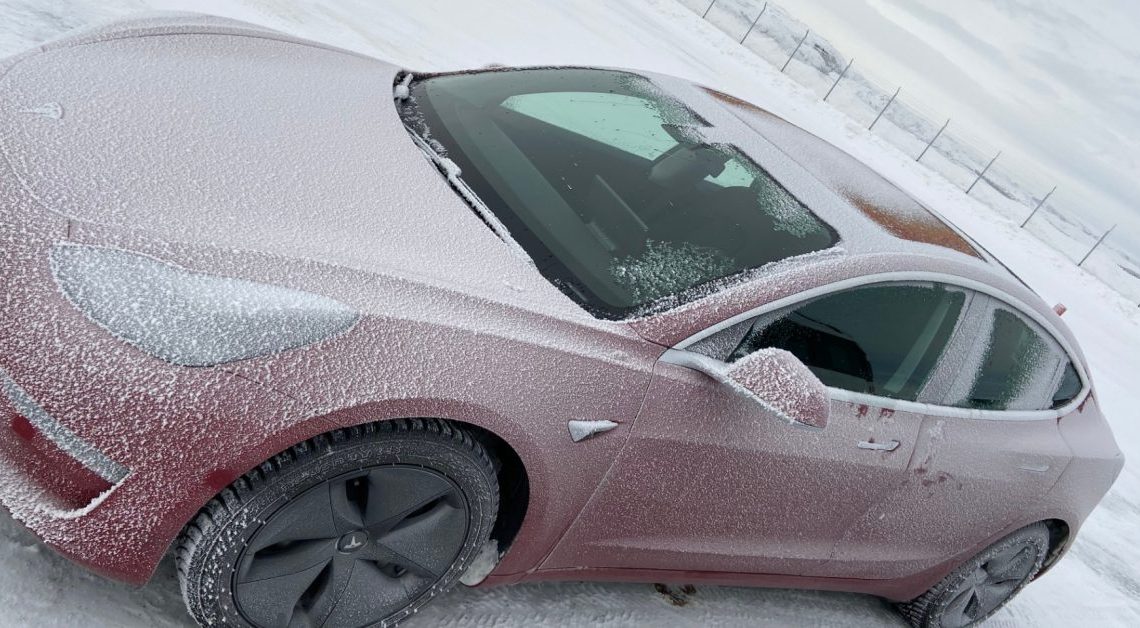
Much of the US is in a deep freeze, so here are six quick tips for how to get the best range from your EV in the winter.
EVs in winter
Cold weather impacts your EV’s range and performance because ions flow through battery cells more slowly. Here’s how to get the best out of your EV in the winter months.
1. Park your car in a garage if possible
If you’ve got a garage, put your EV in it. (If it’s full of stuff, this is a great incentive to clean it out.) And if you’re out and want to park, choose a parking garage when possible. The warmth of the garage will help your car hold battery charge for longer and charge more quickly.
2. Warm up your car’s battery
Most EVs allow you to set a time to warm up your car before departure. This is best practice for performance because it warms up the battery and heats up the cabin.
If you charge at home, keep your EV plugged in when you start to warm it so the battery’s charge won’t be tapped. Ideally, plug the vehicle in and run the heating system for 20-30 minutes before driving.
3. Don’t let the battery charge get too low
When it’s frigid, keep in mind that the car’s battery management system reserves a certain percentage of the battery capacity – generally about 15-20% – to heat the battery.
Aim to stay between 20-80% charging range for maximum efficiency – and plan to charge more frequently. Also, allow for a 20% variance in your available range to be on the safe side.
4. Heat the passenger, not the car
Blasting the heat when it’s cold will reduce your EV’s range. Restrict heating to just the driver’s side if you’re driving solo, or only use seat heaters if you have them. It consumes less power than heating the whole car.
5. Inflate your tires
The air in your tires contracts as the temperature drops and the pressure falls. Check your tires’ pressure regularly to maximize winter range. You want your car to drive with as little resistance as possible.
Also, consider putting on snow tires if you live somewhere with a lot of snow. Be light on the accelerator and brake in adverse weather, and consider turning off your vehicle’s regenerative braking function to prevent unexpected loss of grip on the road.
6. Use eco-mode
Most EVs offer “eco-mode,” which boosts mileage and reduces power consumption by limiting the energy supplied to the driving motor and cabin heaters. You may accelerate more slowly, but this can also make driving safer in icy or snowy conditions. (But if the roads are in poor condition, put the car in traction mode, if you have it, for safety.)
The Zero Emission Transportation Association (ZETA) is posting ways to stay charged and safe on the roads on Twitter (X) – .
Photo: Thomas Nilsen
To limit power outages and make your home more resilient, consider going solar with a battery storage system. In order to find a trusted, reliable solar installer near you that offers competitive pricing, check out EnergySage, a free service that makes it easy for you to go solar. They have hundreds of pre-vetted solar installers competing for your business, ensuring you get high quality solutions and save 20-30% compared to going it alone. Plus, it’s free to use and you won’t get sales calls until you select an installer and you share your phone number with them.
Your personalized solar quotes are easy to compare online and you’ll get access to unbiased Energy Advisers to help you every step of the way. Get started here. – ad*
Author: Michelle Lewis
Source: Electrek



